OnePlus 6T vs OnePlus 6: what difference did half a year make?
Flagship killers compared
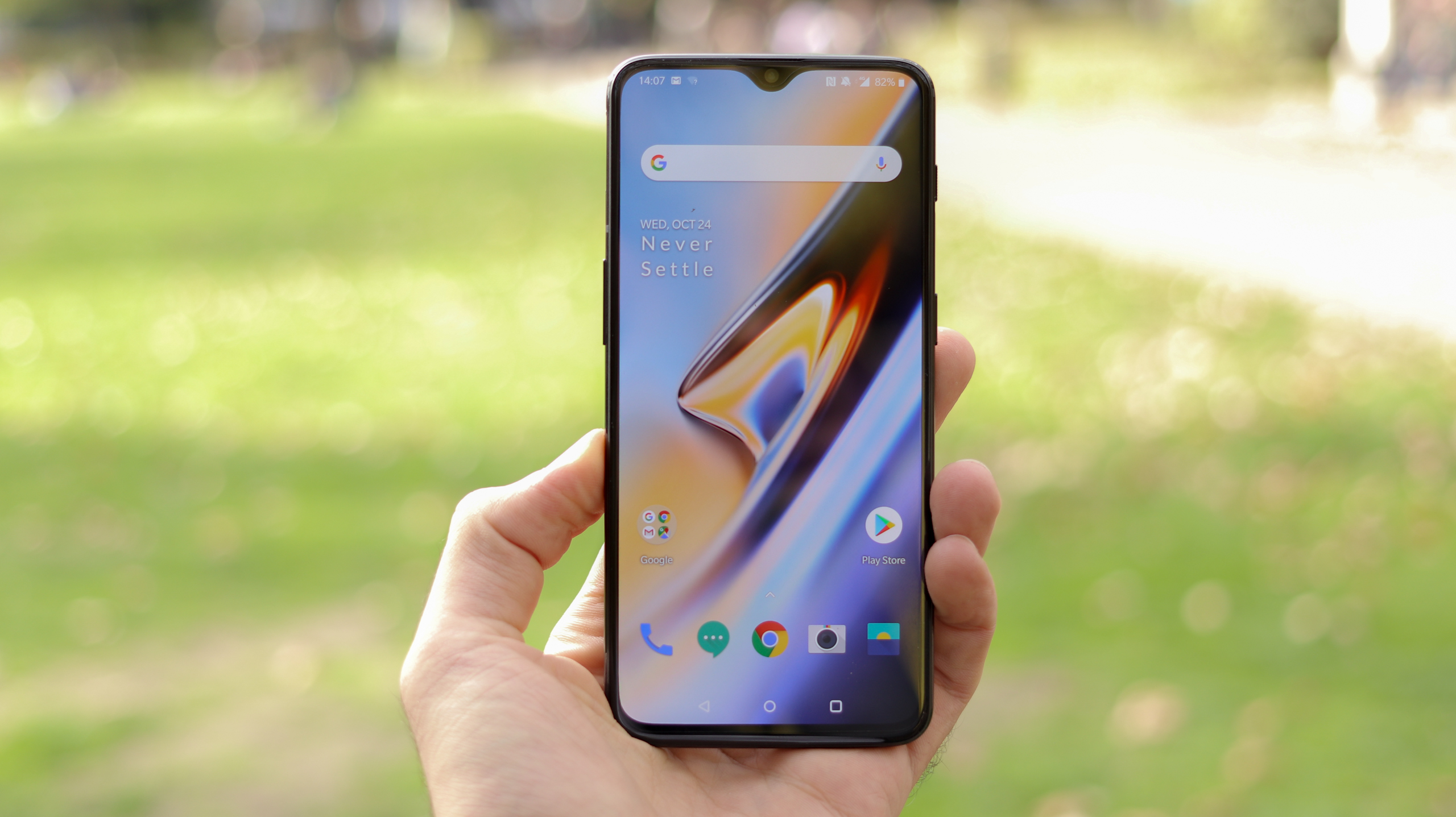
It was only earlier in 2018 that we got the OnePlus 6, but now already the OnePlus 6T is here and although it doesn’t have a new number in the name quite a lot has changed.
The OnePlus 6T has a bigger screen, a larger battery, a refined design and even some new features, among other changes. But there are plenty of similarities between the two phones as well.
So for a complete overview of what’s new, what’s improved, and what’s not, read on, as we compare the OnePlus 6T and OnePlus 6 across every aspect that matters.
- Be sure to read our full OnePlus 6T review
OnePlus 6T vs OnePlus 6 design
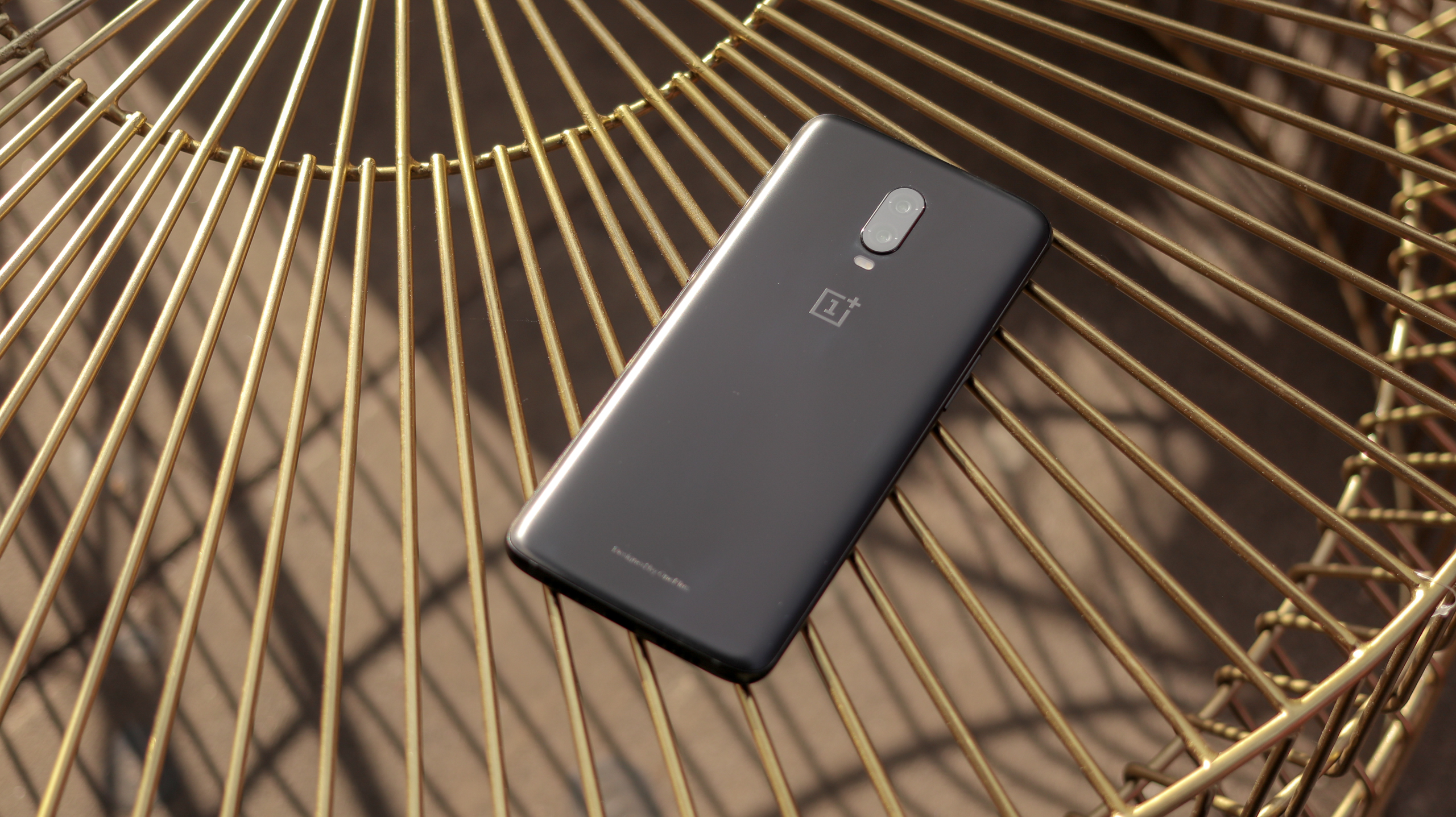

Both the OnePlus 6T and OnePlus 6 have a metal frame and a slightly curved glass back, but there are some differences between them.
For one thing, while the OnePlus 6T is 157.5 x 74.8 x 8.2mm and 185g, the OnePlus 6 is 155.7 x 75.4 x 7.75mm and 177g. So the differences here aren’t major, but the OnePlus 6T is slightly taller, thicker and heavier than the OnePlus 6, which are perhaps not differences you’d have expected.
The differences to the look of the OnePlus 6T are more favorable though, as it has a much smaller notch and it’s in a teardrop shape, rather than a rectangle. Also, the glass of the back is less broken up as there’s no fingerprint scanner on the rear – instead it’s built into the screen.
The available colors also differ, as while both phones come in Midnight Black and Mirror Black, the OnePlus 6 is additionally available in Amber Red and a limited-edition Silk White – though don’t be surprised if the OnePlus 6T gets additional shades down the line.
Get daily insight, inspiration and deals in your inbox
Sign up for breaking news, reviews, opinion, top tech deals, and more.
OnePlus 6T vs OnePlus 6 display
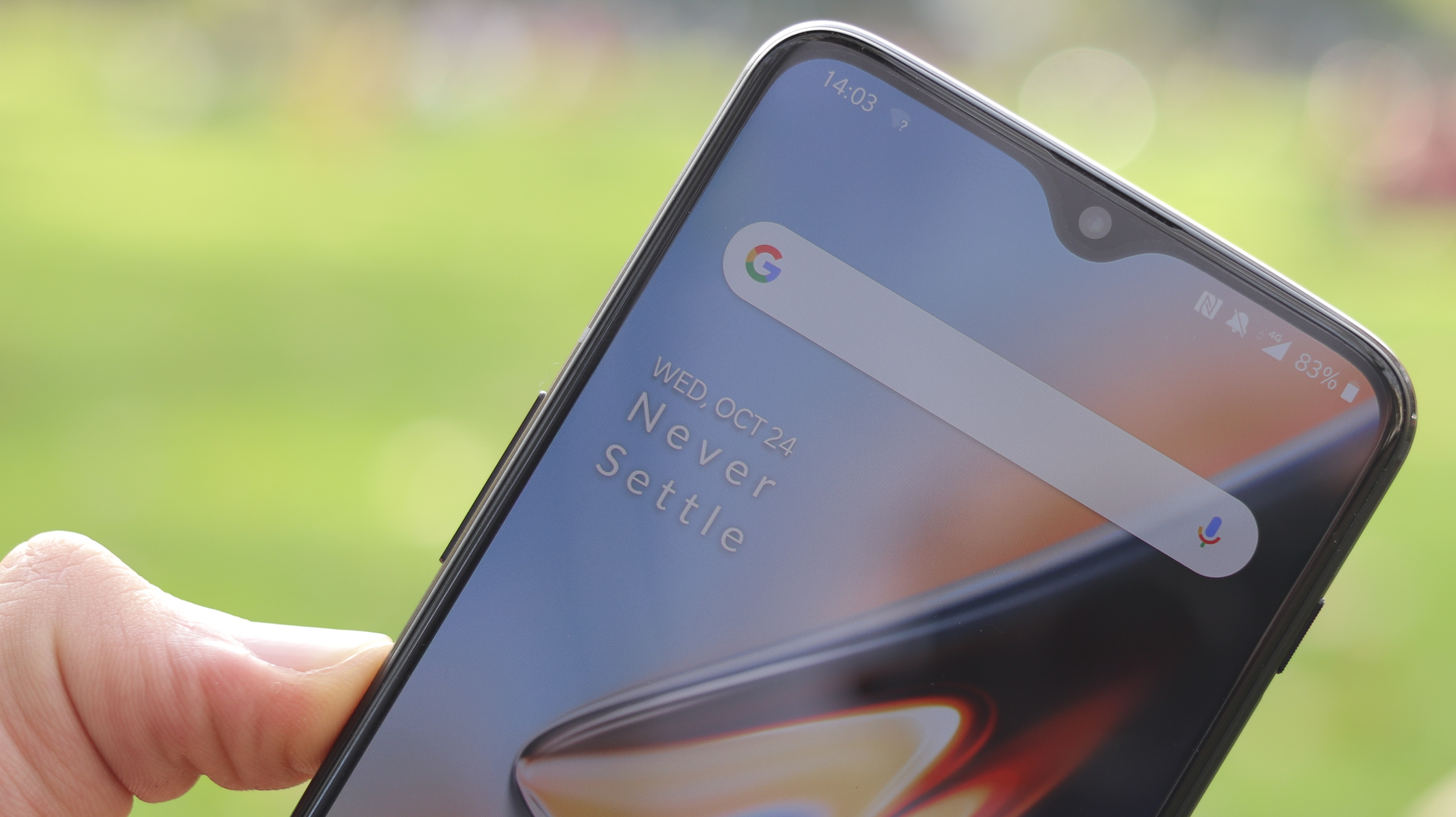
The OnePlus 6T has a 6.41-inch 1080 x 2340 AMOLED display with an aspect ratio of 19.5:9, while the OnePlus 6 has a 6.28-inch 1080 x 2280 AMOLED screen with an aspect ratio of 19:9.
So the OnePlus 6T has a slightly larger, slightly higher resolution screen, though the OnePlus 6 is hardly small, and both phones have a pixel density of 402 pixels per inch.
The OnePlus 6T should also have a tougher display, as it’s protected by Gorilla Glass 6, while the OnePlus 6 uses Gorilla Glass 5.
Visually the two screens are also quite different because, as noted above, the OnePlus 6T has a small teardrop notch, while the OnePlus 6 has a larger rectangular one.
As such the OnePlus 6T has slightly more of an all-screen design, with an 86% screen-to-body ratio (up slightly from around 83.8% on the OnePlus 6), though both phones have a thin bezel below the display.
OnePlus also claims that the 6T’s display is the company’s most power efficient and comfortable-to-view, as well as having improved brightness levels, chromatic accuracy and color ranges.
OnePlus 6T vs OnePlus 6 OS and power
The OnePlus 6T and OnePlus 6 both use a Snapdragon 845 chipset and come with either 6GB or 8GB of RAM, so there’s no difference there.
Both phones also come with either 128GB or 256GB of storage, though there’s additionally a 64GB model for the OnePlus 6, and while the OnePlus 6T ships with Android 9 Pie, the OnePlus 6 is now upgradable to it, so the operating system is much the same too.
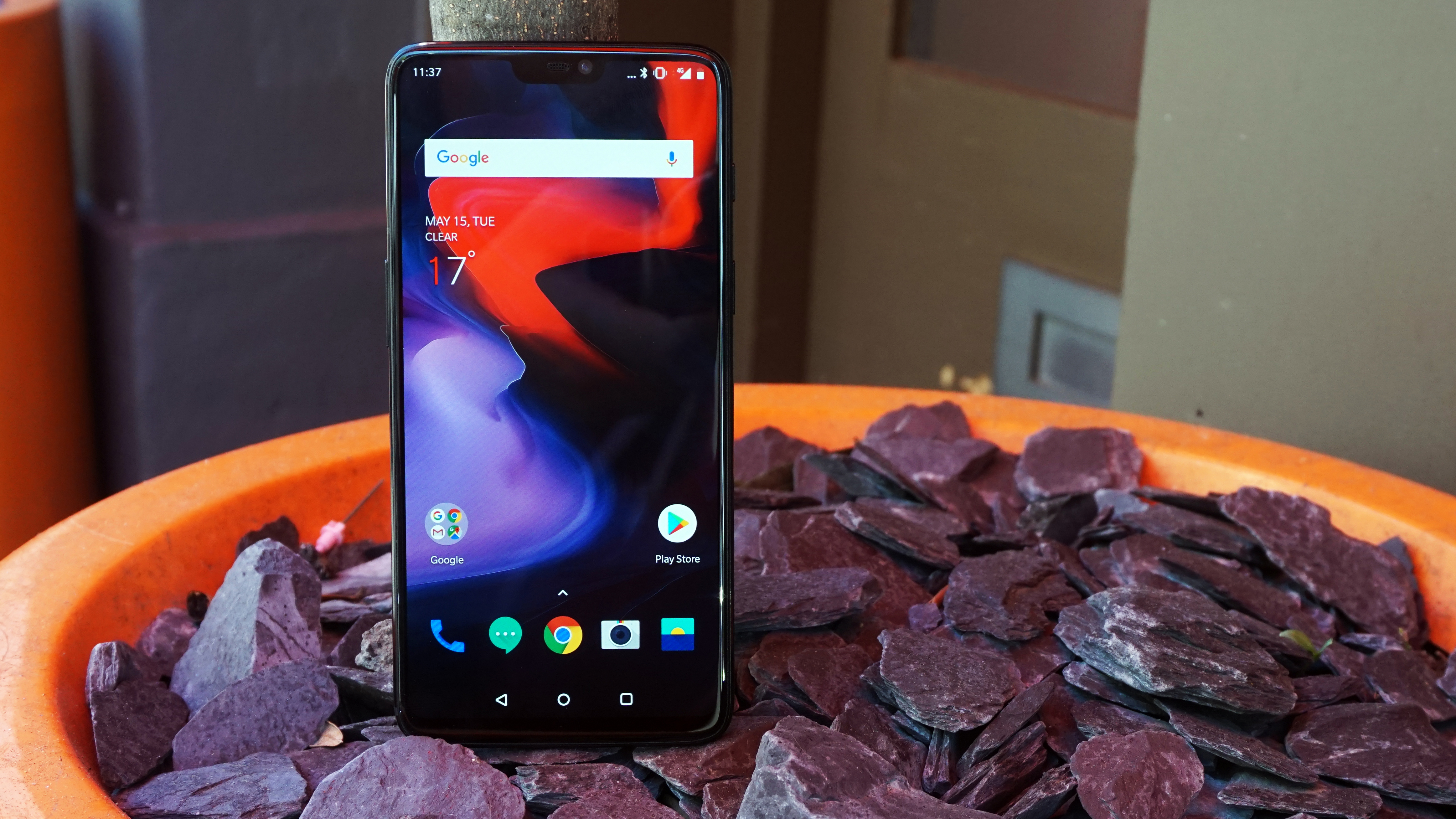
There are some tweaks to the interface though. For example, because the fingerprint scanner is built into the screen on the OnePlus 6T, you can continue pressing the display after the phone is unlocked to bring up a customizable app shortcut, making it faster to get into your favorite apps.
The OnePlus 6T also adds Smart Boost to the mix. This is a feature that’s designed to make apps start up faster, by storing data from frequently used apps in the phone’s RAM.
OnePlus 6T vs OnePlus 6 camera and battery
Both the OnePlus 6T and OnePlus 6 have a dual-lens camera on the back, comprised of a 16MP f/1.7 sensor with optical image stabilization (OIS) and a 20MP f/1.7 one without OIS. Both phones also have a 16MP f/2.0 camera on the front.
However, there should be some improvements to the OnePlus 6T’s camera under the surface, as it apparently uses a new algorithm to optimize the settings for faces, text, food and night scenes.
The battery has had a bigger change though, as it has gone up from 3,300mAh on the OnePlus 6 to a much healthier 3,700mAh on the OnePlus 6T. Both phones support fast charging though.
Hopefully the larger size will lead to increased life – the OnePlus 6 lasts a fairly ordinary one day of moderate use in our tests, but we’ll let you know how the 6T stands up once we’ve put it through a full review.
OnePlus 6T vs OnePlus 6 price and availability
The OnePlus 6T will hit stores on November 6 and costs $549 / £499 (about AU$780) for a version with 6GB of RAM and 128GB of storage, rising to $579 / £529 (about AU$825) for 8GB of RAM and 128GB of storage, and topping out at $629 / £579 (approximately AU$895) for 8GB of RAM and 256GB of storage.
The OnePlus 6 on the other hand starts at $529 / £469 (around AU$750) for a version with 6GB of RAM and 64GB of storage, so that’s slightly less than the starting price of the 6T but with half the storage.
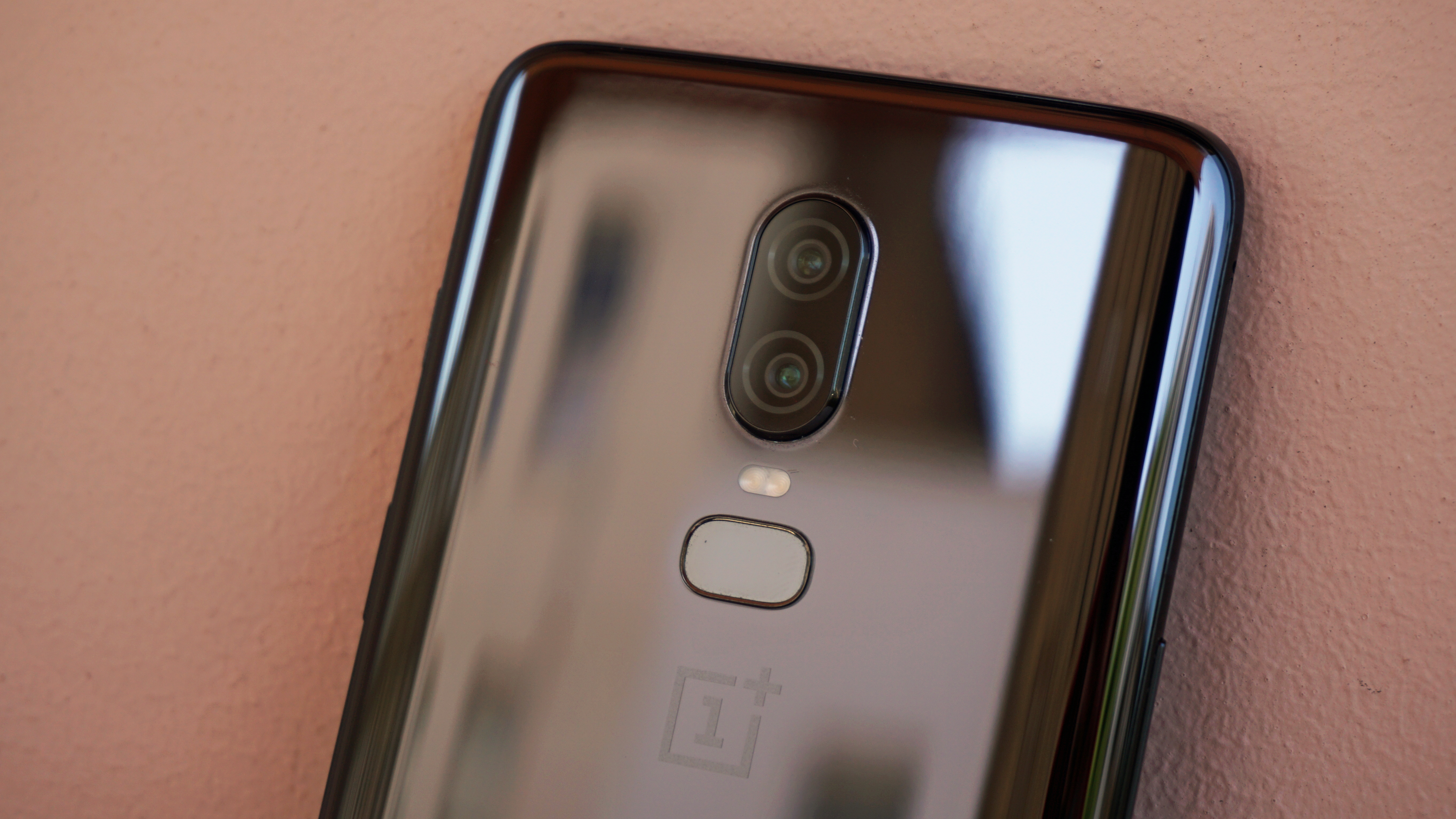
There’s then a version with 8GB of RAM and 128GB of storage for $579 / £519 (roughly AU$825), and a model with 8GB of RAM and 256GB of storage for $629 / £569 (approximately AU$895). So the comparable models are priced the same whether you choose a OnePlus 6 or 6T.
Of course, stores are likely to start offering the OnePlus 6 for less now that the OnePlus 6T is out, but equally you might not be able to get hold of the older phone anywhere for much longer.
Takeaway
The OnePlus 6T is a significant upgrade in some ways and not much of one at all in others. The in-screen fingerprint scanner and smaller notch are perhaps the headline features, but you also get a bigger battery, a slightly larger screen and behind the scenes improvements to both the screen and camera if you opt for the OnePlus 6T.
Power and storage on the other hand aren’t much changed – though it’s nice to see OnePlus retiring the 64GB size that it offered the OnePlus 6 in.
The 6T probably isn’t a phone to upgrade to if you already have the OnePlus 6 (and you really probably shouldn’t be upgrading your phone every six months anyway), but if you’re rocking an older or lower end handset then it could be a strong choice, especially as it costs around the same amount as its predecessor.
- Check out the best smartphones you can buy
James is a freelance phones, tablets and wearables writer and sub-editor at TechRadar. He has a love for everything ‘smart’, from watches to lights, and can often be found arguing with AI assistants or drowning in the latest apps. James also contributes to 3G.co.uk, 4G.co.uk and 5G.co.uk and has written for T3, Digital Camera World, Clarity Media and others, with work on the web, in print and on TV.